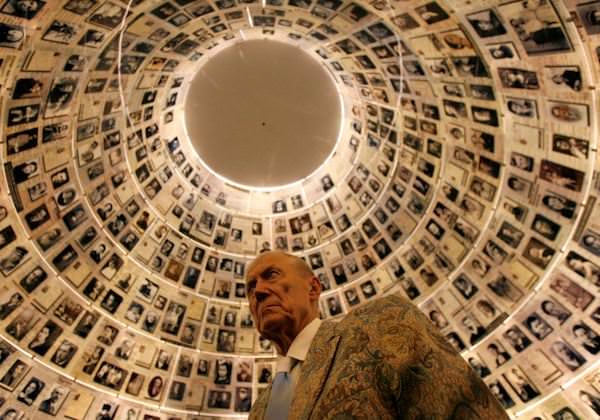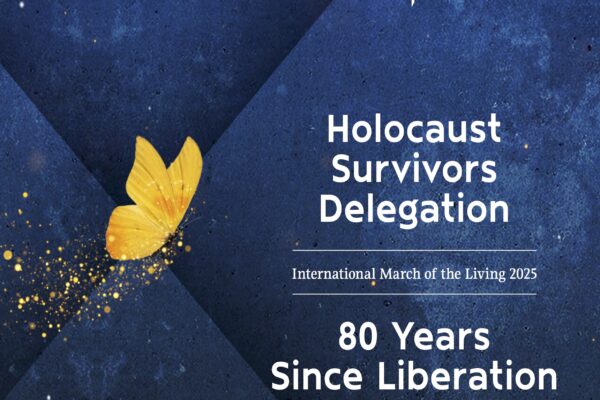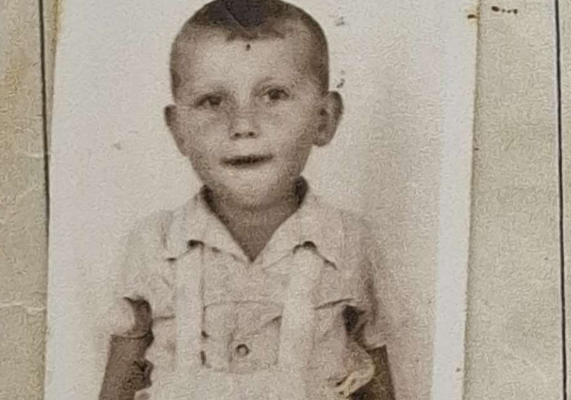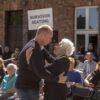
Russian poet Yevgeny Yevtushenko visits the Hall of Names at the Yad Vashem Holocaust Memorial in Jerusalem November 15, 2007. (photo credit:REUTERS)
JPost – With a slew of recent incidents clearly indicating that antisemitism is on the rise in the US and in Europe and the voice of Holocaust deniers resounding louder and louder, the need to preserve the memory of World War II’s atrocities has grown ever more pressing in recent years.
But the commemoration of the genocide of 6 million Jews is becoming a very challenging task in a world where the number of survivors who can recount first-hand testimonies is diminishing by the day.
A new exhibit at the Museum of Jewish Heritage in New York City addresses this problem in a creative way, utilizing modern technology to help ensure that even decades after the last of the world’s Holocaust survivors passes away, people will still be able to engage in conversation with survivors, ask them questions and learn their stories.
The exhibit, aptly titled “New Dimensions in Testimony,” is the result of a collaboration between the Steven Spielberg-founded Shoah Foundation and the Institute for Creative Technologies, both based at the University of Southern California.
While the idea of using 21st century tools to bring to life historical accounts, and in particular ones from the Holocaust, did not originate with this exhibit, it is certainly pioneering in the scope of testimonies and the level of intimate interaction it suggests.
The Shoah Foundation and the Institute for Creative Technologies recorded close to 52,000 interviews with survivors from the Nazi era and the recordings have been condensed and adapted so that visitors to the museum can sit in front of the display and ask the survivors on the screen questions that would prompt the relevant responses.
The concept designer behind these virtual interviews, Heather Smith, told ABC News: “What we’ve found is that it personalizes that history. You connect with that history in a different way than you would just seeing a movie or reading a textbook or hearing a lecture.”
The exhibit offers two such conversations with Holocaust survivors Pinchas Gutter and Eva Schloss, facilitated by language-recognition technology and high-definition video and audio techniques.
“Anne was really a very sophisticated little girl,” Schloss says when asked about her step-sister Anne Frank, whose famous journal recounts the story of her life in hiding with her family and was published posthumously by her father Otto Frank, who married Schloss’s mother in 1953.
Schloss herself is 88 years old and lives in London. She went into hiding with her family during the war in Amsterdam, but they were captured and sent to Auschwitz. In 1945, she was liberated from the death camp by the Russian Army. Schloss has told her story to schoolchildren in talks she has held as well as in books, including one called “Eva’s Story: A Survivor’s Tale by the Stepsister of Anne Frank.”
According to concept designer Smith, Schloss’s testimony could be experienced in a variety of formats, including holographic technologies that are still in development.
The other account is by Holocaust survivor Pinchas Gutter. Sitting on a red chair, Gutter can be seen in the exhibit facing the camera and talking about his story as well as his present living situation. The 85-year-old survivor lives in Toronto, Canada, and the technology used by the museum can now allow visitors to hear from him answers to a whopping 20,000 questions.
A question about the Nazi death march, for instance, prompts Gutter to recall: “We marched for two and a half weeks. And only half of us arrived at Theresienstadt. The rest were either killed or died on the road.”
Smith explains that the new technology is also expected to impact how the history of the Holocaust will be taught in future classrooms. “The vision was to ultimately have a classroom of kids or one child or one adult actually in a room and sitting across from a Holocaust survivor and I wanted them to feel as if it was as real as possible,” she said.
Originally published HERE







